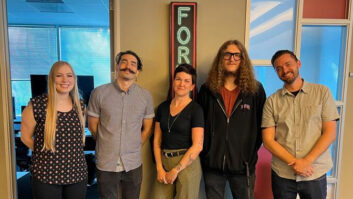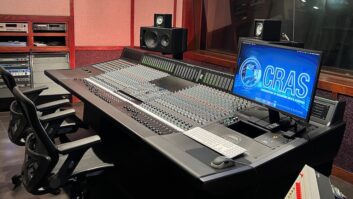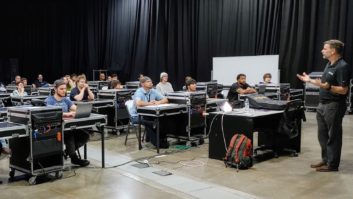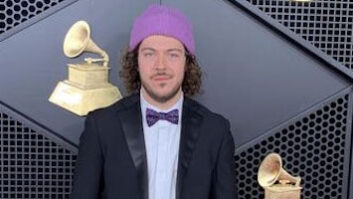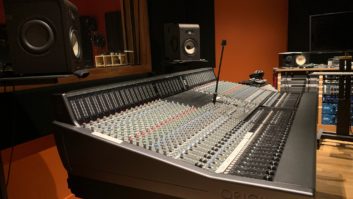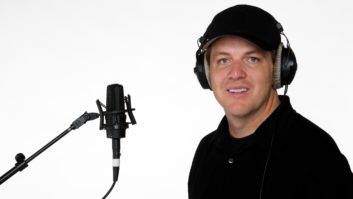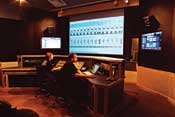

For more than two decades, the Conservatory of Recording Arts and Sciences has provided high-quality audio training to those who believe that they will never be satisfied with any other career path. In an era when many recording schools have diversified their programs to include other disciplines, CRAS has deliberately renewed its focus on the art and science of audio.
CRAS emphasizes a “real-world” approach to audio training that includes industry-standard facilities, an experienced teaching staff, manufacturer support and technical certifications. As CRAS administrator Kirt R. Hamm asserts, “You can’t enter the audio industry half-heartedly. Our simple formula for success is that we enroll motivated, academically capable people with realistic goals. We educate them comprehensively, then help jump-start their careers via our internship program.
“We have a finite number of seats available in our programs, so throughout our admissions process, we search for people whose goals match up with our goals and industry goals,” he adds.
Studio D, the Pro Tools 5.1 sound-for-picture room
Photo: Jon Lamar
The Conservatory’s facilities encompass a total of 45,000 square feet — 14,500 in its original Tempe, Ariz., location. Four miles away in Gilbert, 25,000 square feet have been added in the built-from-the-ground-up complex that opened in November 2003.
“We expanded due to need,” explains Hamm. “Because we’re committed to never having more than 12 students in any class, we had a two-year waiting list at our Tempe location. Our curriculum is very focused: We prepare our students to be entry-level audio engineer assistants, with the skill set to move into higher-level positions very quickly.”
The 30-week curriculum comprises audio recording and production, digital recording, sound reinforcement, music business and troubleshooting/maintenance (includes traditional audio equipment and computer, networking and IT studies). Numerous manufacturers’ certifications are available to students, including Digidesign, TC Electronic, Alesis, JBL, Yamaha, Antares and Logic Audio. CRAS is also an Apple-authorized education center.
CRAS now boasts eight full analog/digital recording studios and 12 labs. Six of the studios, set up for stereo, feature either SSL 4000 G Series, Neve VR or Neotek Elite consoles. Two studios were designed and built for 5.1 with an M&K speaker system, Pro Tools|HD2 Accel and Focusrite controllers.
A sophisticated, 6,000-square-foot live sound venue, with a professional stage and concert lighting, is one of the highlights of the new location. Equipped with a Yamaha PM1D for FOH and a 40×12 Soundcraft Spirit monitor desk, the live room features a JBL VerTec line array system. Outboard equipment includes Klark-Teknik, TC Electronic, dbx, Drawmer, Behringer, Yamaha and Roland.
“We’ve forged strategic alliances with Yamaha and JBL to develop certification programs,” Hamm comments, “and we have made the venue available to them for manufacturer training and listening sessions.”
CRAS’ live sound curriculum was designed by leading live sound authority (and six-time TEC Award — winner) Robert Scovill. “Working in the field over 20 years, I’ve seen a growing need for people with formal training,” says Scovill. “There’s a steep learning curve in audio now and major challenges ahead. At CRAS, we spend a lot of time on audio fundamentals: wave mechanics, signal flow, routing, et ceter. We also strive to teach ‘concept versus console’ so that students can walk into all kinds of situations with an expectation of success. With the new live venue, the goal was to create an environment that was as real world as possible.”
According to Scovill, another priority has been to develop a network of internships with live sound companies. “There’s a need for it,” he notes. “It’s an important component of the CRAS program that is also beneficial to employers. Recording technology is bleeding into live venues; students who come out certified, for example, in Pro Tools, as well as trained in live sound, are becoming hot commodities.”
At any given time, the CRAS student body averages approximately 600 — 480 on campus and 100 on internships, a required component of the curriculum. “Students choose the city and the kind of business they want to intern in,” explains Hamm. “We have strong relationships with incredible facilities such as Electric Lady and Sony Studios in New York, Cello and Signet Soundelux in Los Angeles, Omni Sound and Sound Stage in Nashville, Stankonia in Atlanta and Chicago Recording Company.
“Ultimately,” Hamm concludes, “we’re successful because of our students. We’re charged with the task of looking down the road to see what new gear and techniques will be in use in the years to come. We have graduates employed in all different aspects of the industry; this year two of our students were honored with Grammy Awards. That makes all our hard work worthwhile.”

Conservatory of Recording Arts and Sciences’ floorplan
Interior design by Jerry Davis, Jeremiah and Associates. The new Conservatory of Recording Arts and Sciences’ building is 25,000 square feet, houses a 6,000-square-foot live sound classroom, four studios, three control rooms, Pro Tools and MIDI labs, and many classrooms outfitted with 5.1 audio and Powerpoint.
Architect’s ariel view
